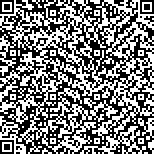| 摘要: |
| 在新数据源与技术方法的支撑下,
把握城市在场人口的时空分布特征,对于了
解居民对城市资源时空配置的差异化需求
和城市空间的精细化管理有重要意义。以北
京中心城区为例,本文利用2017年连续4周
的联通手机信令数据,以500 m×500 m尺度
的栅格单元分析在场人口的分布、流动性及
时段变化特征。研究结果表明:一、在场人
口主要分布在六环以内,呈现“多组团状”分
布,部分空间单元在场人口高达居住人口的
6~38倍;二、在场人口的流动性形成依托环
线的明显的圈层结构,二环以内的第一圈层
随机流动性人口居多,二环至五环之间的第
二圈层规律流动性人口居多,五环以外的第
三圈层静止人口居多;三、北京市工作日在场
人口较休息日更多,一天中局部空间的在场人口密度波动极大,并且各类典型城市空间具有鲜明的时段变化规律。最后,提出面向在场人口
的城市设施配置及人口管理的思考和建议。 |
| 关键词: 在场人口 手机信令数据 流动性构成 时段特征 北京市 |
| DOI:10.13791/j.cnki.hsfwest.20210514 |
| 分类号: |
| 基金项目:国家自然科学基金项目(41971206) |
|
| Research on the Localized Population Dynamics in Beijing Based on Cell Phone Data:Distribution, Mobility, and Temporal Variation |
|
HAN Binli,Ren XiYuan,WANG De
|
| Abstract: |
| Residents’ activities are not limited to the periphery of their residence in urban
daily life. Therefore, the localized onsite population of the city is dynamic, which brings great
influence on urban spatial structure and new challenges to urban space management and
resource allocation. However, traditional census data and activity survey data only show the
periodical changes of urban daily population at macro level and fail to reflect the actual onsite
population and their mobility in the city. Hence, capturing the spatial-temporal characteristics
of urban actual onsite population, especially under the support of new data sources and
methods, is of great importance to urban resource allocation and high-granularity urban
space management. This paper analyzes the distribution, mobility and temporal variation
of actual onsite population in Beijing central city, aiming at revealing the spatial-temporal
characteristics of onsite population and clarifying the key areas, key groups and key periods
requiring special control, and also providing a reference for urban population management
and spatial policy-making. Cell phone data with a duration of successive 4 weeks in 2017 were
used to support a 500 m×500 m-gird research unit, which has high sample rate and fine time
granularity. The results show that: Onsite population in Beijing are mainly located in central
area inside the Sixth Ring Road, forming a multi-cluster distribution, and have formed a multi-
cluster distribution. The highest ratio of actual onsite population to residential population can
reach 6-38, which shows heavier population pressure than previous recognition. The actual
onsite population is highly concentrated in the employment center, commercial center and
transportation hubs, such as the CBD area, Wangfujing district, Zhongguancun district and
units of Beijing South Railway Station, with an average daily onsite population of more than
40 000 people per square kilometer. The actual onsite population could be further divided
into random population, regular population and static population according to its mobility.
The mobility of onsite population demonstrates a ring structure of Beijing. Units inside the
Second Ring Road have high proportions of random population; units between the Fifth RingRoad and the Second Ring Road have high proportion of regular population; units outside the Fifth Ring Road have high proportion of static
population. Localized onsite population has explicit temporal patterns: the onsite population size of Beijing is 13.9% larger in workdays than that
in weekends, and its distribution show obvious characteristics of clustering and axis; the typical employment center and commercial center have
larger onsite population in workdays than in weekends, and units of tourist attractions such as Beijing Olympic Sports Center and the Imperial
Palace have the opposite situation; actual onsite population in some grids also fluctuate drastically during a day, which in peak hours can reach
ten times or even dozens of times more than that in off-peak hours, with typical functional areas showing distinct regularity. Finally, suggestions
with respect to urban resource allocation and population management with onsite population taken into consideration are proposed and discussed.
The average daily onsite population and peak-hour onsite population should be taken into account in the allocation of high-grade public service
facilities and transportation facilities; flexible space shall be reserved for energy supply and public service facilities in district or community
with the peak-hour onsite population taken into consideration; the allocation of public service facilities serving the local residents could refer to
the resident population, and could be adjusted according to the average daily onsite population. For actual onsite population management, areas
with high onsite population density or high ratio of actual onsite population to residential population shall be focused on, and measures such as
foot traffic early warning during peak hours shall be taken. |
| Key words: Onsite Population Cell Phone Data Mobility Structure Temporal Feature Beijing Municipality |


